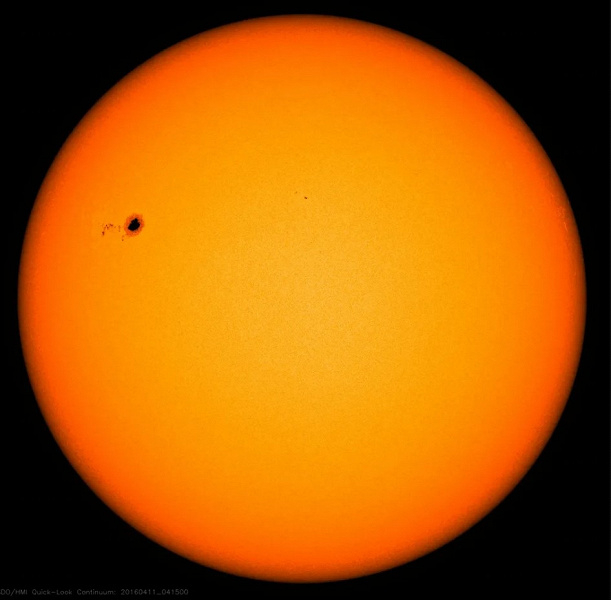Scientists have discovered similarities between phenomena on Earth and the Sun
A group of scientists discovered long-lasting radio signals over sunspots. The radio signals were detected at an altitude of about 40,000 kilometers above the sunspot. This is the first ever observation of such radio signals on the Sun; previous long-lasting radio signals have been detected on other planets or stars.
«This radio emission from sunspots represents the first detection of its kind», — said lead author Xiji Yu of the New Jersey Institute of Technology.
The discovery of long-lasting radio signals from the Sun will help scientists better understand our star and study the processes underlying radio signals, as well as processes occurring on distant stars. The Sun regularly emits short radio bursts that can last from a few minutes to several hours.
However, the radio burst observed by scientists lasted more than a week, significantly longer than ordinary short radio bursts. The researchers made observations using 27 radio telescopes in New Mexico, combined into a «Very Large Array» (VLA).
In addition to their duration, radio bursts have spectra and polarization features similar to auroras on Earth, caused by the interaction of solar particles with the planet's magnetic field. On Earth, as well as on Jupiter and Saturn, auroras arise as a result of the interaction of solar particles with a magnetic field, attracting and accelerating the particles to the poles, where the magnetic field lines converge.
When solar particles accelerate toward the poles, they emit intense radio signals at frequencies of several hundred kilohertz. When they reach the planet's atmosphere, interacting with the atoms of the atmosphere, an «aurora» occurs.
Scientists analyzed the data to study the characteristics and nature of long-lasting radio bursts detected above sunspots. The results showed that radio bursts likely arise as a result of processes similar to the process of formation of auroras. The energetic electrons become trapped in the magnetic field created by the sunspot. Once in the field, the particles are accelerated towards the sunspot, where the magnetic field lines converge, creating radio signals.
Unlike «aurora» on Earth, Jupiter, and Saturn, radio bursts over sunspots occur at much higher frequencies, about one million kilohertz, a significant difference from the usual hundreds of thousands of kilohertz at which auroras occur on Earth.
«This is a direct consequence of the fact that the magnetic field of a sunspot is thousands of times stronger than the Earth's magnetic field», — explained Yu.
Over the coming weeks and months, the team will re-examine other solar radio bursts to determine whether they are similar to the long-lasting bursts detected by the VLA.
«We are in an excellent position to study the sources of such radio bursts thanks to NASA's growing fleet of heliophysics missions. For example, the Solar Dynamics Observatory [SDO] constantly monitors active regions of the Sun, which may lead to this phenomenon», — said heliophysicist Nachimuthuk Gopalswami of NASA Goddard Space Flight Center.

